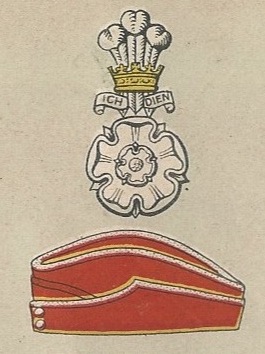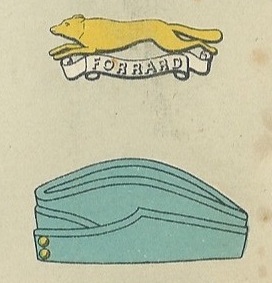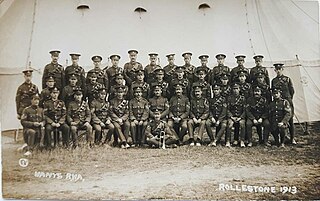Sports
- West Riding County Amateur Football League
- West Riding County Women's Football League
- West Riding County Cup
- West Riding County Football Association
West Riding most commonly refers to:
West Riding of Yorkshire, one of three former administrative counties making up Yorkshire in England.
West Riding may also refer to:

Yorkshire is an area of Northern England which was historically a county. Despite no longer being used for administration, Yorkshire retains a strong regional identity. The county was named after its original county town, the city of York.
A riding is an administrative jurisdiction or electoral district, particularly in several current or former Commonwealth countries.

Kirklees is a metropolitan borough of West Yorkshire, England. The borough comprises the ten towns of Batley, Birstall, Cleckheaton, Dewsbury, Heckmondwike, Holmfirth, Huddersfield, Meltham, Mirfield and Slaithwaite. It is governed by Kirklees Council. Kirklees had a population of 422,500 in 2011; it is the third-largest metropolitan district in England by area, behind Doncaster and Leeds.

Yeomanry is a designation used by a number of units and sub-units in the British Army Reserve which are descended from volunteer cavalry regiments that now serve in a variety of different roles.
Options for Change was a restructuring of the British Armed Forces in summer 1990 after the end of the Cold War.
The 2003 Defence White Paper, titled Delivering Security in a Changing World, set out the future structure of the British military, and was preceded by the 1998 Strategic Defence Review (SDR) and the 2002 SDR New Chapter, which responded to the immediate challenges to security in the aftermath of the September 11 attacks in 2001. Published under the then Secretary of State for Defence, Geoff Hoon, the report effectively introduced a series of cutbacks to core equipment and manpower and the scaling back of a series of future capital procurement projects. This was justified due to the implementation of a policy termed Network Enabled Capability. The review also outlined a major restructuring and consolidation of British Army Infantry regiments.

Tees Valley is a combined authority area in North East England, around the lower River Tees. The area is not a geographical valley; the local term for the valley is Teesdale. The combined authority covers five council areas: Darlington, Hartlepool, Middlesbrough, Redcar and Cleveland and Stockton-on-Tees.

The West Riding Artillery was formed as a group of volunteer units of the British Army in 1860. Its units later formed the divisional artillery of the West Riding Division of the Territorial Force in World War I and World War II. The West Riding Artillery's lineage is continued in a battery of today's Army Reserve

The Yorkshire Hussars was an auxiliary unit of the British Army formed in 1794. The regiment was formed as volunteer cavalry (Yeomanry) in 1794 during the French Revolutionary Wars and served in the Second Boer War and the First World War. It was converted to an armoured role during the Second World War. In 1956, it merged with two other Yorkshire yeomanry regiments to form the Queen's Own Yorkshire Yeomanry. Its lineage is continued today by the Queen's Own Yeomanry.

The Queen's Own Yorkshire Dragoons was a yeomanry regiment of the British Army in existence from 1794 to 1956. It was formed as a volunteer cavalry force in 1794 during the French Revolutionary Wars. Its volunteer companies played an active role with the Imperial Yeomanry in the Second Boer War, but opportunities for mounted action were much more restricted during the First World War and it was temporarily converted into a cycle unit. It remained a cavalry regiment throughout the interwar years, and was the last horsed unit of the British Army to see action, in the Syria–Lebanon Campaign of 1941, finally mechanising the following year. It served as motorised infantry in the North African and Italian campaigns of the Second World War. In 1956, it merged with the Yorkshire Hussars and the East Riding of Yorkshire Yeomanry to form the Queen's Own Yorkshire Yeomanry. Its lineage is continued today by A Squadron, the Queen's Own Yeomanry.

The East Riding of Yorkshire Yeomanry was a unit of the British Army formed in 1902. Units of Yeomanry Cavalry were raised in the East Riding of Yorkshire in the 18th and early 19th centuries at times of national emergency: the Jacobite Rising of 1745, the French Revolutionary Wars and the Napoleonic Wars. These were stood down once each emergency was over. The East Riding of Yorkshire Yeomanry, was established in 1902, and this saw action during the First World War both in the mounted role and as machine gunners.

The Westmorland and Cumberland Yeomanry was a Yeomanry Cavalry regiment of the British Army with its origins in 1798. The regiment provided troops for the Imperial Yeomanry during the Second Boer War and served on the Western Front in the First World War, latterly as infantry. The regiment converted to artillery in 1920 and served as such in the early years of the Second World War, before becoming part of the Chindits in Burma. Postwar it served as a gunner regiment until 1971 when the title disappeared.
The Yorkshire Mounted Brigade was a formation of Britain's part-time Territorial Force organised in 1908. Mobilised on the outbreak of World War I, its regiments had been posted away by 1915 so it was broken up. It never saw active service.

The Hampshire Royal Horse Artillery was a Territorial Force Royal Horse Artillery battery that was formed in Hampshire in 1909. It saw active service during the First World War in Egypt and Palestine from 1916 to 1918, initially as field artillery with 52nd (Lowland) Division before being converted back to horse artillery and serving with the Yeomanry Mounted Division and 1st Mounted / 4th Cavalry Division. A second line battery, 2/1st Hampshire RHA, served on the Western Front in 1917 and 1918 as part of an Army Field Artillery Brigade. Post-war, it was reconstituted as a Royal Field Artillery battery.
The Essex Royal Horse Artillery was a Territorial Force Royal Horse Artillery battery that was formed in Essex in 1908. It saw active service during the First World War in Egypt and Palestine from 1916 to 1918, initially as field artillery with 52nd (Lowland) Division before being converted back to horse artillery and serving with the 2nd Mounted / 5th Cavalry Division. A second line battery, 2/1st Essex RHA, served on the Western Front in 1917 and 1918 as part of an Army Field Artillery Brigade.
The Militia and Volunteers of County Durham are those military units raised in the County independent of the regular Army. The "modern" militia dates from legislation enacted during the Seven Years' War. The volunteers had several forms and separate periods of existence until made a permanent body in 1859.
Two regiments of West Riding Yeomanry Cavalry were formed in 1794, disbanded at the Peace of Amiens in 1802, and reformed in 1802 and 1803.

The 1st East Yorkshire Artillery Volunteers was a part-time unit of Britain's Royal Artillery based in the East Riding of Yorkshire, which also contained sub-units from the North and West Ridings. Created during an invasion scare in 1859–1860, it survived to supply units to the later Territorial Force of the 20th century.
The 3rd Battalion, Yorkshire Volunteers was an infantry battalion of the only full Territorial Army (TA) regiment in Yorkshire. The battalion was formed along with the 2nd Battalion of the same regiment in 1971. However, in 1992 following the end of the Cold War, the 3rd and 4th battalions amalgamated, thus ending the official lineage.
The 4th Battalion, Yorkshire Volunteers was an infantry battalion of Yorkshire's only Territorial Army (TA) regiment, and existed for just around four years before amalgamating with another battalion of the Yorkshire Volunteers.